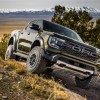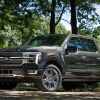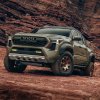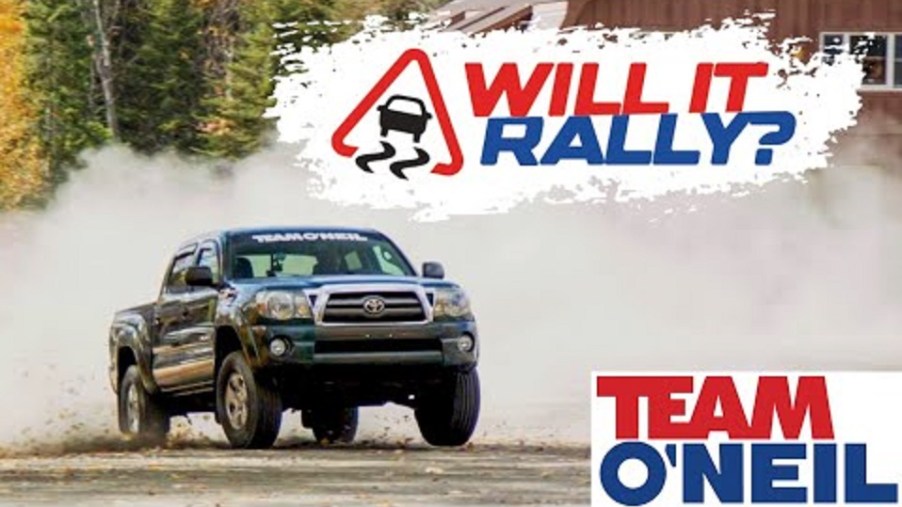
The Toyota Tacoma Is a Surprisingly Awesome Rally Truck
Although ‘racing’ may not be the first thing you think of when it comes to pickup trucks, it’s actually quite popular. Although some series are on paved tracks, the vast majority are set on dirt and rocks, the kinds of conditions that many modify their trucks to tackle. Rallying is the exception. Although off-road, rally races’ tight turns and the trucks’ higher weights usually limited pickups to parking in the spectator area. Toyota did rally their RAV4 crossover a few years ago; I personally witnessed a similarly-prepped RAV4 racing at the SnoDrift rally. But even Toyota’s TRD-modified Tacoma was kept off the rally stage. Recently, however, the celebrated Team O’Neil Rally School wanted to challenge all this. They set out to prove if the Toyota Tacoma could rally.
The Tacoma in Question
Team O’Neil used a second-gen (2005-2015) double cab Tacoma for their tests. These trucks are particularly valued for their reliability, which is just as important for rally racing as it is for the average consumer. Host Wyatt Knox notes this particular Tacoma was part of Toyota’s frame replacement program. 2005-2010 Tacomas had frame rust issues, so Toyota replaced the entire frame of this truck. In fact, Toyota went even further than that. They replaced rusty brake lines, the fuel tank, the leaf springs, front control arms and parts of the exhaust.
Now, replacing worn or dangerously rusty components is standard racing-prep practice. But some of the features on this Tacoma go even further. This truck has several equipment packages. The first is the TRD Off-Road package, which grants Bilstein suspension, a button to remotely lock the rear differential, BFG off-road tires, a protective skidplate under the engine, and a tow hook at the front. Like today’s TRD Tacoma, it also has a six-speed manual transmission. None of these mods would be out of place on a rally-prepped car.

There’s also the tow package. At first glance, it doesn’t seem all that rally-focused. But some of the upgrades would actually be beneficial for racing. For instance, beyond the hitch at the back, there’s also an upgraded battery and alternator. Rally racing is brutal, and you need a lot of juice to power, among other things, the extra fog lights (which this Tacoma also has). That upgraded electrical equipment could be had from the factory is one less headache for racers to worry about.
Another headache is keeping things properly cooled. An overheated engine or transmission could spell disaster during the race. Luckily, the tow package also included additional engine oil and transmission fluid coolers.
Testing Setup
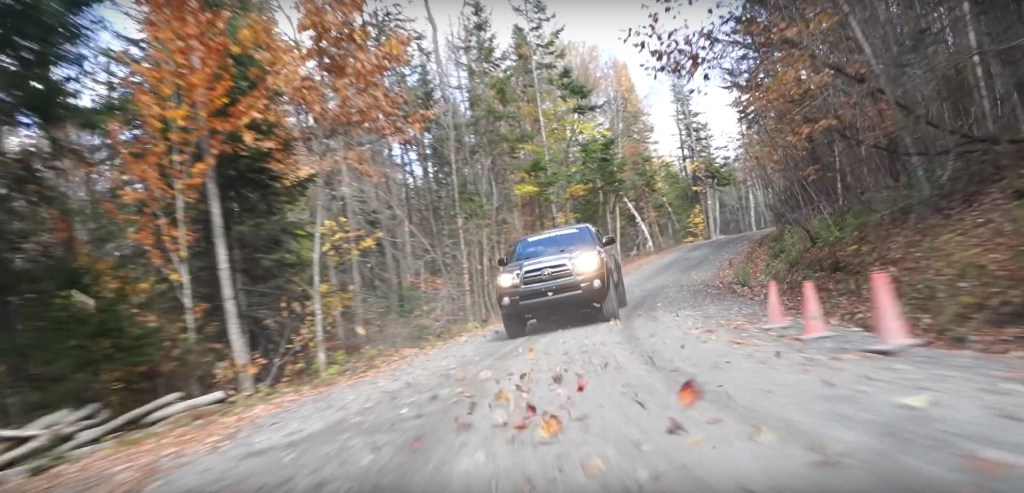
Although the Tacoma does have buttons to turn the traction and stability control off, Team O’Neil removed both systems’ fuses to really make sure they were off. The ABS fuse was also removed, as is usual in such scenarios, to improve braking performance.
Team O’Neil then ran the Tacoma through several performance tests. First, a 0-60, in two-wheel and four-wheel drive modes, followed by braking. Handling was first tested by drifting around a dirt skidpad and slalom courses. Finally, a timed lap around a small, specially-prepped rally stage.
Team O’Neil Tests Toyota Tacoma Rally Qualifications
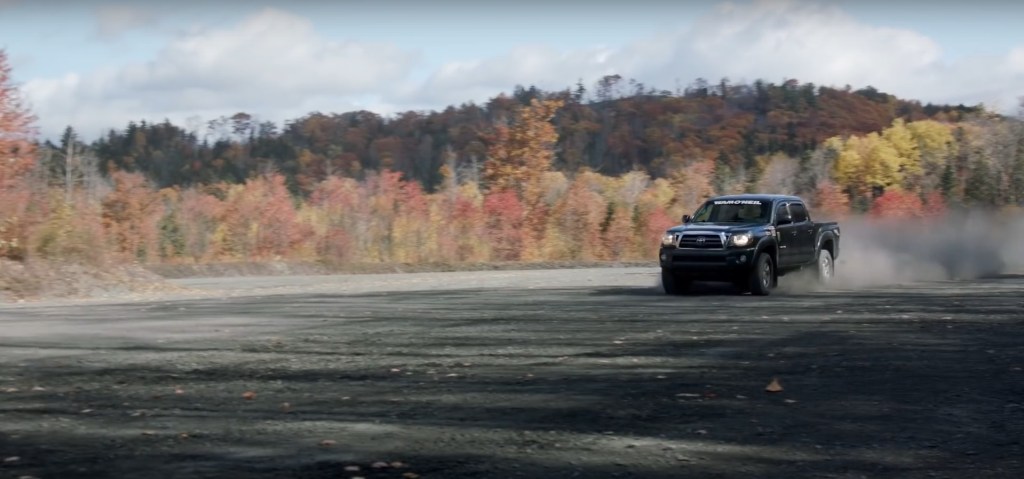
The Tacoma’s 236-hp V6 isn’t exactly a powerhouse, but as a relatively lightweight midsize truck, it was good for a 9.36 second run to 60 in four-wheel drive. The two-wheel-drive test wasn’t timed, but with four-wheel drive’s superior traction and ability to actually use full throttle, it presumably would’ve been slower. The 60-0 brake test was also not measured, but Wyatt deemed it “not bad.”
Skidding around in two-wheel drive was fairly easy, Wyatt noted. Although pickup trucks carry more of their weight in the front, the larger cab and trailer equipment added back some balance. Wyatt liked the former, as it let the Tacoma rotate, but he also enjoyed the latter, for stable drifting. However, running around in two-wheel drive highlights two issues with the pickup.
The first is wheel hop. Even with Bilstein shocks, there are still leaf springs in the back, so heavy acceleration and rabid cornering cause the wheels and axle to bounce. The second issue is tire choice. While the off-road BFG tires work well, they have tall sidewalls, which compress and rebound, which affects handling and ride comfort. This is something that often occurs with off-road tires.
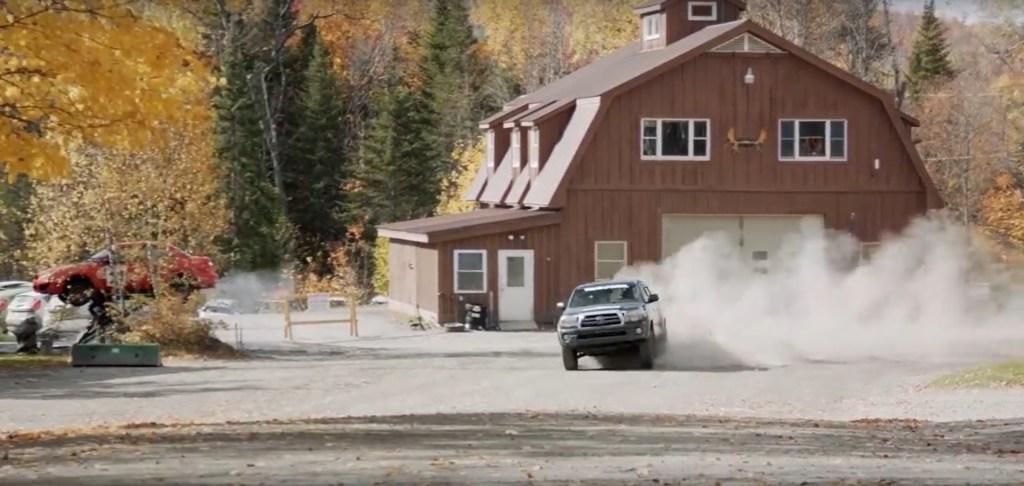
Happily, switching to four-wheel drive—standard for rally cars—solves the issues. Another pleasant surprise is the close-ratio nature of the transmission. The gearing makes the engine’s power more than adequate and means Wyatt didn’t have to spend too much time shifting.
The Toyota Tacoma ran the rally stage in a time of 2:02.94. In contrast, a Dodge Charger cop car in similar conditions needed 2:05.52 to finish the course. Team O’Neil did put another Toyota pickup, a Hilux, on the course before, but it was in winter, not summer. Nevertheless, Wyatt was impressed with the Tacoma’s performance.
Can the Toyota Tacoma Rally?
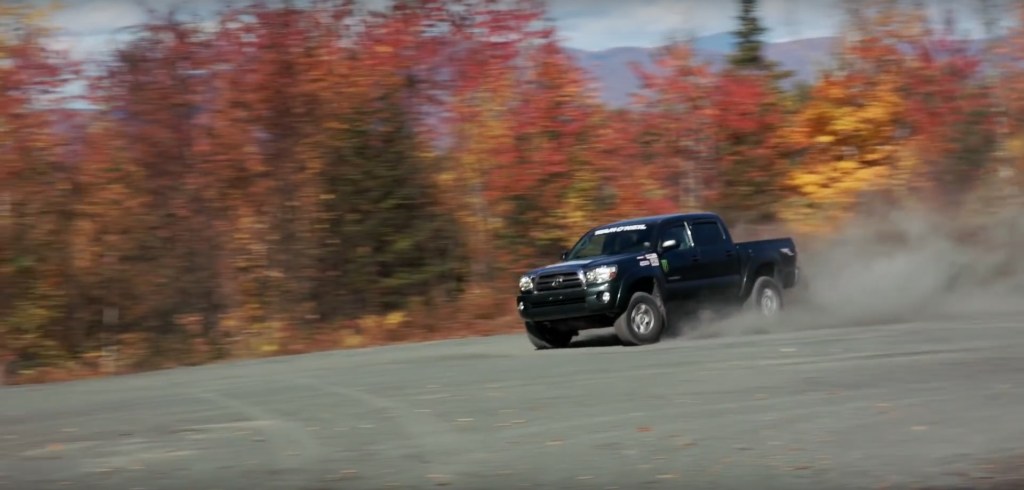
Wyatt does suggest a few modifications to improve the Tacoma’s time. Different tires to start, followed by reducing weight. But even stock, this truck handled testing very well.
So who’s going to be the first to make a Toyota Tacoma rally racer?
